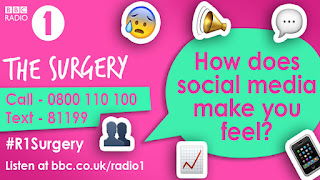Radio: War of the Worlds
Go to our Media Factsheet archive on the Media Shared drive and open Factsheet #176: CSP Radio - War of the Worlds. Our Media Fact sheet archive is on the Media Shared drive: M:\Resources\A Level\Media Fact sheets - you'll need to save the fact sheet to USB or email it to yourself in order to complete this at home. Read the fact sheet and answer the following questions:
1) What is the history and narrative behind War of the Worlds?
Orson Welles’ 1938 radio play is an adaption of H.G. Wells’ novel of the same name, first published in 1898. It tells the story of an alien invasion and the ensuing conflict between mankind and an extraterrestrial race from Mars1) What is the history and narrative behind War of the Worlds?
2) When was it first broadcast and what is the popular myth regarding the reaction from the audience?
3) How did the New York Times report the reaction the next day?
4) How did author Brad Schwartz describe the broadcast and its reaction?
5) Why did Orson Welles use hybrid genres and pastiche and what effect might it have had on the audience?
6) How did world events in 1938 affect the way audiences interpreted the show?
Context, including the issues and concerns of late 1930s America, helps to explain why the audience may have responded to the text as if it were real. In September 1938, one month prior to the plays
broadcast, Hitler signed the Munich Agreement annexing portions of Czechoslovakia and creating the ‘Sudetenland’. Europe’s failed appeasement of Germany was viewed with much concern and for many, it seemed that another world war was inevitable
7) Which company broadcast War of the Worlds in 1938?
8) Why might the newspaper industry have deliberately exaggerated the response to the broadcast?
by external factors such as the social and political context of the time. It was not impossible to believe that a foreign power was invading American soil in 1938. Gerbner's Cultivation Theory might offer a more accurate explanation of the audience’s behaviour in response to the radio broadcast since it emphasises the longer-term effects that media texts have upon audiences.
9) Does War of the Worlds provide evidence to support the Frankfurt School's Hypodermic Needle theory?
10) How might Gerbner's cultivation theory be applied to the broadcast?
invasion broadcasts during Welles’ production.
11) Applying Hall's Reception Theory, what could be the preferred and oppositional readings of the original broadcast?
12) Do media products still retain the ability to fool audiences as it is suggested War of the Worlds did in 1938? Has the digital media landscape changed this?
Some media products can end up fooling audiences but audience do not remain passive in such a way to not recognise fake news or anything made up. This could be due to the digital convergence and the era of digitisation audiences now can research into things if it my not be true.
Analysis and opinion
1) Why do you think the 1938 broadcast of War of the Worlds has become such a significant moment in media history?
This is because it was one year before the war and there was a lot of controversy during this time.People were listening to the news more and wanted to know what was going on so they could be prepared.
This is because it was one year before the war and there was a lot of controversy during this time.People were listening to the news more and wanted to know what was going on so they could be prepared.
2) War of the Worlds feels like a 1938 version of 'fake news'. But which is the greater example of fake news - Orson Welles's use of radio conventions to create realism or the newspapers exaggerating the audience reaction to discredit radio?
I think it is the idea of the newspapers exaggerating the audience reaction with the constant repetition of this to get audiences attention. The radio conventions are used anyways but this constant reference to it encourages audiences to believe it.
3) Do you agree with the Frankfurt School's Hypodermic Needle theory? If not, was there a point in history audiences were more susceptible to believing anything they saw or heard in the media?
I agree to some extent as audiences wouldn't be able to know as their information source only came from the media and therefore were more susceptible to the things said in the media. Audiences didn't have enough resources then to actually find out as much as there is now in the modern age.
4) Has the digital media age made the Hypodermic Needle model more or less relevant? Why?
I think that is more relevant now audiences choose what to believe and what not to and this creates their opinions which links with this theory of the media injecting this information and audiences forming their opinions through this.
5) Do you agree with George Gerbner's Cultivation theory - that suggests exposure to the media has a gradual but significant effect on audience's views and beliefs? Give examples to support your argument.
I believe this to a significant extent as audiences are exposed to certain types of media more as they choose to view it may be they are more aggressive so they choose to watch more violence on TV. This cultivates their mind and they want to keep on watching as it provides a route for escapism. Also now the media significantly influences individuals because of so many media plat forms available.
6) Is Gerbner's Cultivation theory more or less valid today than it would have been in 1938? Why?
I think now it is more valid that it would have been as now there is more choice and freedom available in what audiences decide to watch.

Comments
Post a Comment